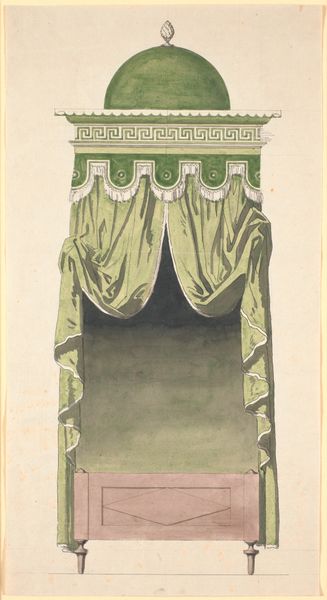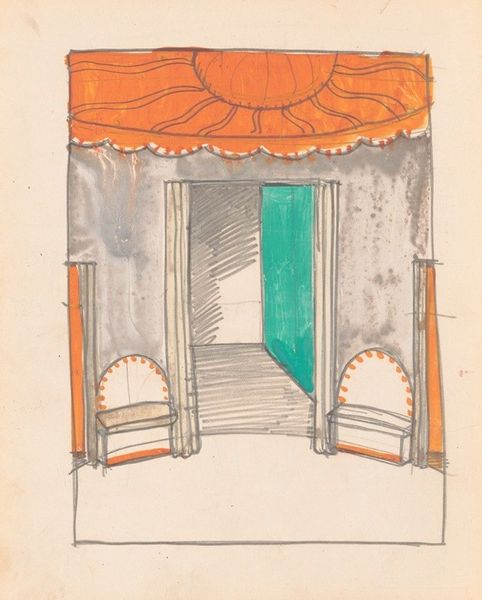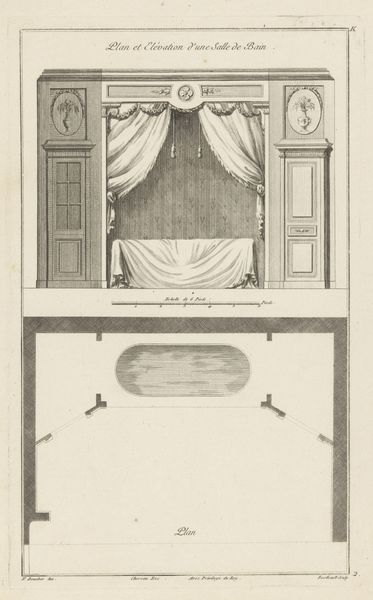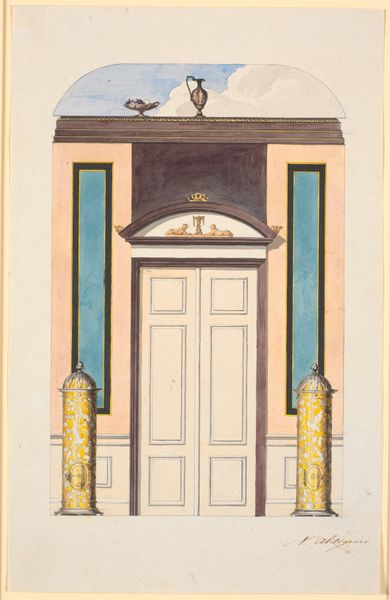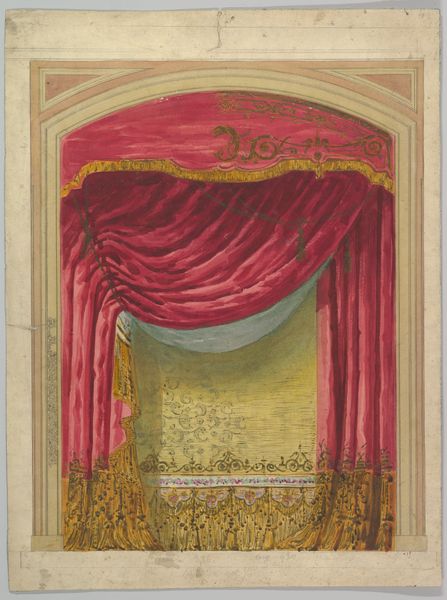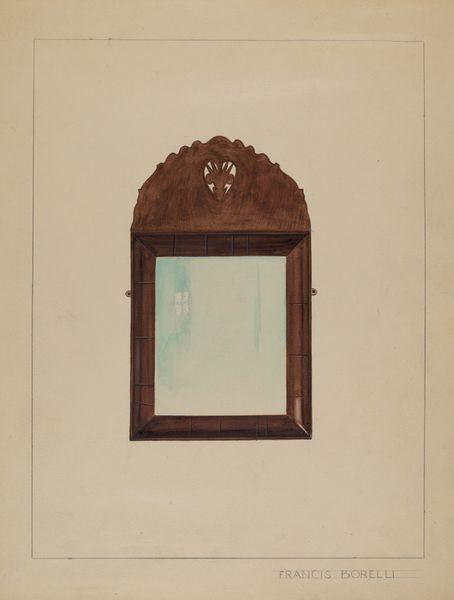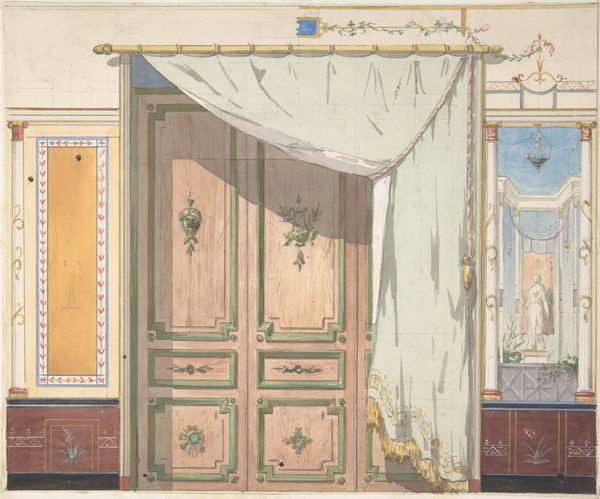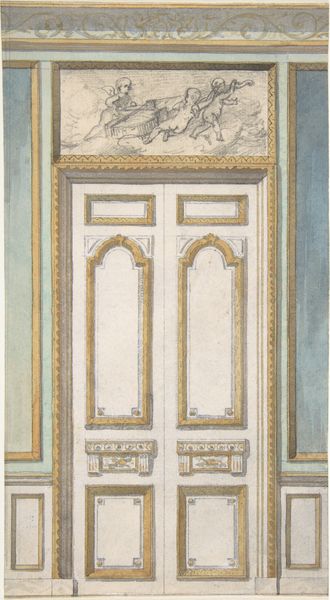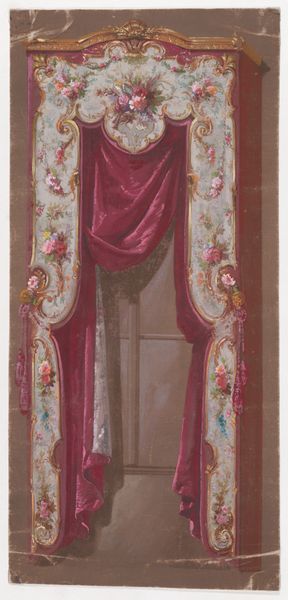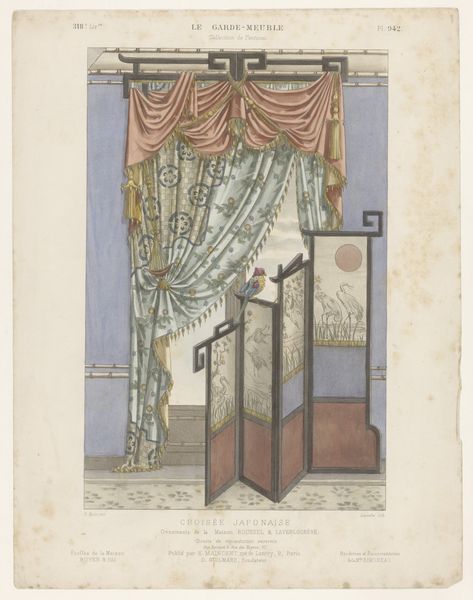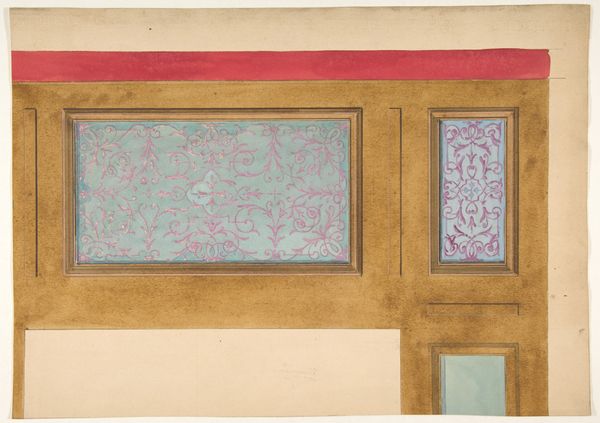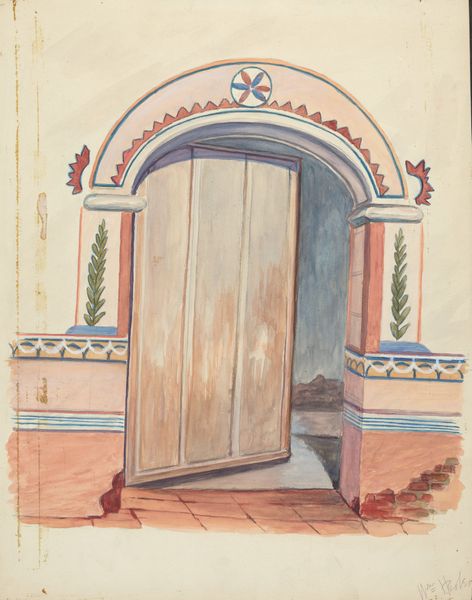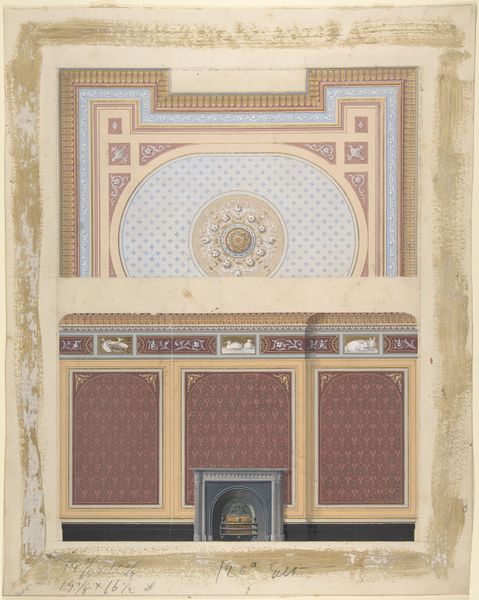
Vægdekoration i det blå kabinet, udkast til endevæggen 1743 - 1809
0:00
0:00
drawing, watercolor, architecture
#
drawing
#
neoclacissism
#
historic architecture
#
traditional architecture
#
watercolor
#
history-painting
#
academic-art
#
watercolor
#
architecture
Dimensions: 390 mm (height) x 247 mm (width) (bladmaal)
Editor: We’re looking at “Wall Decoration in the Blue Room, Design for the End Wall,” created between 1743 and 1809 by Nicolai Abildgaard. It's a watercolor and drawing. The room's focal point is the color and placement of that striking blue couch against the soft hues surrounding it. What is your perspective on this piece? Curator: From a formalist point of view, this design elegantly balances line, color, and form. The geometry is meticulously constructed: note the rectangularity and carefully situated symmetry, the clear lines of the architectural frame against the fluid drapery. Consider the tension between the cool blues and grays, punctuated by flashes of gold – particularly effective is the curve of the drapery over the frame. Editor: I notice how the dark grey wash inside the frame contrasts so heavily with the bright gold frame, making the room feel much more mysterious. Curator: Precisely. Note also how that shadowed space lacks specific detail and discernable content; it suggests rather than defines. In tandem with the cloudlike sky above, the shape mimics that below, while offering just enough suggestion of depth to further emphasize the two-dimensional aspects of the surface design. To what effect? Editor: To remind us we are looking at an *image* of a room rather than being in one? To reinforce that contrast in mediums, maybe? Curator: An insightful observation. How would you say the artist directs the viewer's eye? Editor: The eye seems drawn from the light sky to the shadowed "window" then jumps from the sofa to the candles to take in the full range. Curator: Yes, through carefully planned placement of value and compositional forms. The artist controls how our gaze moves across the image. It is a work rich with carefully calibrated visual devices. Editor: I’ve definitely learned a lot more about how the artist directs our attention through compositional elements and juxtapositions. Curator: Indeed. Close visual analysis yields rich insights here, demonstrating how a drawing operates beyond mere representation.
Comments
No comments
Be the first to comment and join the conversation on the ultimate creative platform.
